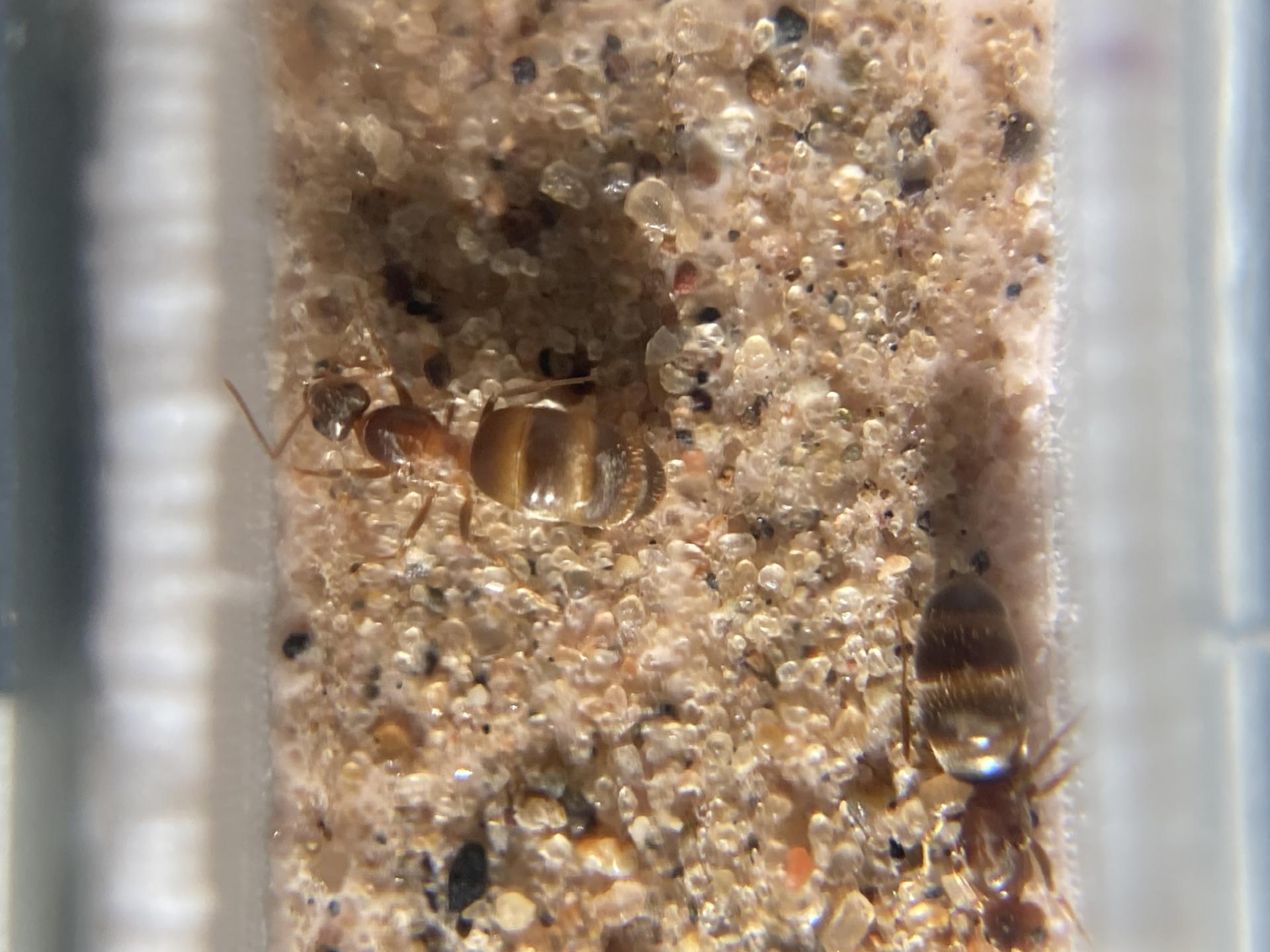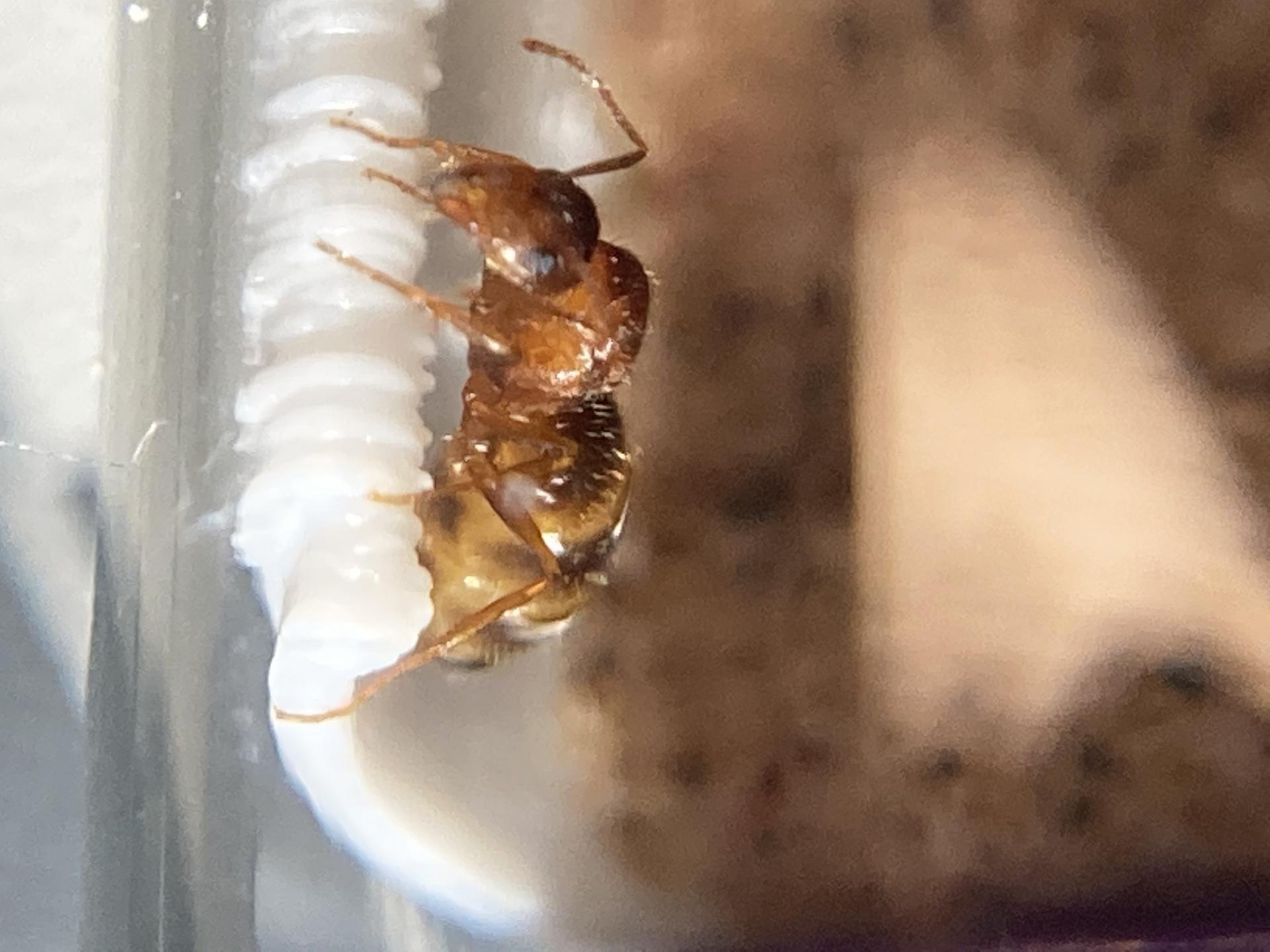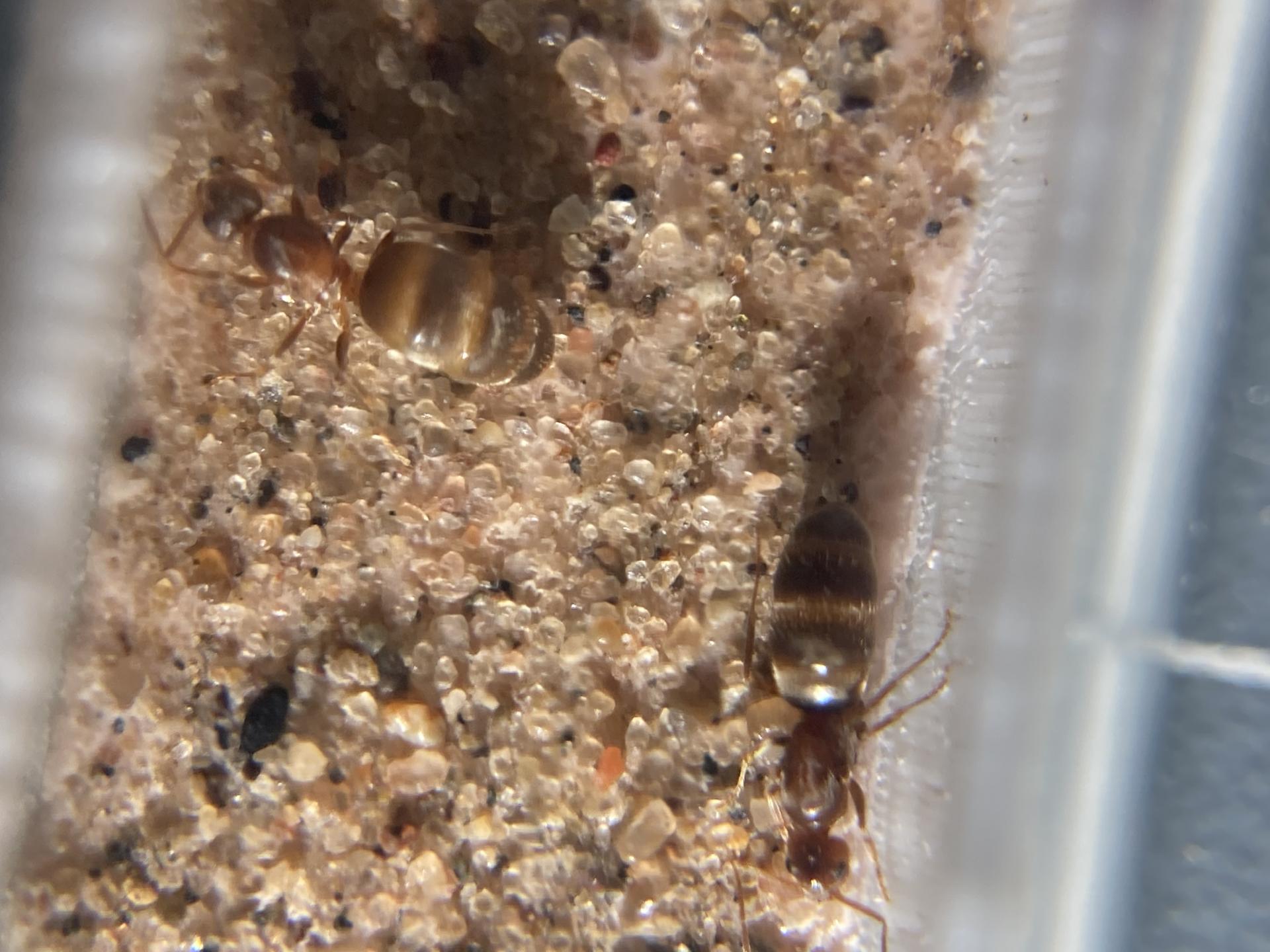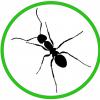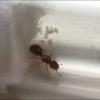1. Tupelo, MS
2. 2022/04/07
3. City Park
4. NA
5. Orange/Brown
6. N/A
7. N/A
8. N/A
9. 2022/04/07, Dug up from new founding chamber. Chamber was in sand and there are dozens close proximity. Possibly Dorymyrmex ???
Are these Polygymous?
Edited by DarkCerebral, April 7 2022 - 7:12 PM.






